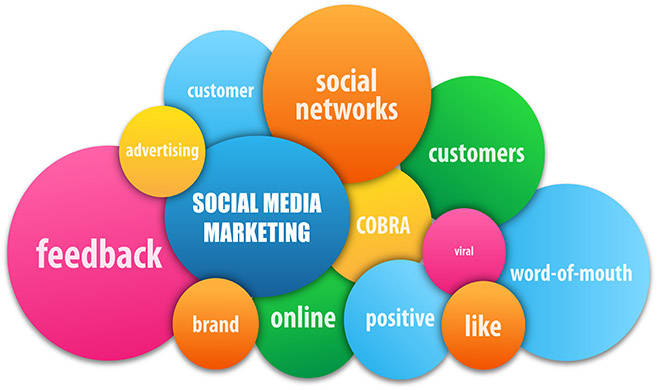Today’s marketplace is heavily influenced by the internet, which has changed the way consumers make decisions about their purchases: They won’t rely solely on marketer-generated information only (ads or salespeople). Instead, they look up reviews on sites such as TripAdvisor or HolidayCheck, find more product information or check customer testimonials on e-commerce websites, look at other people’s recommendations, etc. In other words, they turn to eWOM.
eWOM is a powerful market force, because consumers find it an unbiased and trustworthy source of product information. Over the past two decades, a lot of research has investigated the role of eWOM in the marketplace. In this article, we take stock of that knowledge and offer marketers a roadmap about how eWOM works so that they are better equipped to manage this marketplace phenomenon, and, eventually, boost product sales.
What eWOM is not
Before diving into the eWOM phenomenon, it is important to delineate what is eWOM and what it is not. For example, critics’ reviews, electronic recommendation systems, and general chatter on the internet have all been placed under the header of eWOM. Even though these phenomena are related, they are qualitatively different from eWOM. In addition, extant definitions of eWOM have become outdated as they refer to “statements” or “textual postings”, while today’s consumers can engage in eWOM through other formats, such as photos and videos. We therefore introduce a revised definition of eWOM that addresses the confusion about this concept: eWOM is consumer-generated, consumption-related communication that employs digital tools and is directed primarily to other consumers.
eWOM is consumer-generated, consumption-related communication that employs digital tools and is directed primarily to other consumers.
This definition allows us to delineate the key components: the source (consumers as senders of eWOM), the message (consumption-related content), the channel (digital conversation tools), and the receiver (primarily other consumers).
The three stages of eWOM
Having defined its key components, we further propose that eWOM consists of three key stages: creation, exposure and evaluation. For eWOM to have an effect in the marketplace, it first needs to be created. Then, consumers need to be exposed to it, because eWOM that is created but not noticed will not have any effect. Finally, for the effect to materialize, consumers need to evaluate the eWOM message and take it into account in their decision-making process.
Throughout these three stages consumers take on a dual role: They are eWOM creators, senders of information, and when they are exposed or evaluating, they are eWOM receivers.
In our literature review, we focused on what we know about consumers’ motivations, opportunities, and abilities to create, be exposed to, and evaluate eWOM. We also described what marketers can do in each of the three eWOM stages to influence consumer motivations, increase their opportunities, and reinforce their abilities as senders and receivers of eWOM.
How marketers can use the roadmap
Marketers can influence eWOM at any of the three stages. If they want to influence the creation of eWOM they must first ask, ”Why do people create eWOM?” Our roadmap shows that there are many motivations for doing this, and these have evolved over time. For example, in the early days of the internet, consumers wrote posts about products because they genuinely wanted to help others in their consumer experience. However, in more recent years, in line with the increased use of social media platforms like Facebook and Instagram, people have less altruistic motivations. Instead, they create posts for social recognition, meaning that they like to show off to their friends by saying things like, “Look at me, I went to this exclusive restaurant.”
To make the most of eWOM and help initiate its creation, marketers need to understand these different motivations. To support altruistic eWOM creation, marketers can appeal to consumers by forwarding product-related questions asked by other consumers (ex. Amazon). To support eWOM created for social recognition, marketers can offer picture-perfect photo opportunities (ex. Disneyland) and encourage consumers to share these on their social media accounts.
When it comes to helping consumers be exposed to and evaluate eWOM, beauty company Sephora is a good example illustrating how marketers can leverage eWOM content created about their products. eWOM messages are easily accessible through a search function on the Sephora website, improving exposure.
Customers can search for other customers reviews that are specifically relevant to them (skin type, eye colour, product benefit sought…) which helps in their evaluation of the eWOM message (is it credible, informative, convincing?) and positively influences the eWOM impact on purchase likelihood and customer satisfaction.
Marketers must stay ahead of the game
With the rise of the internet and social media, marketers’ jobs have become more complicated. They need to stay ahead of the game to be able to influence consumers purchase decisions. Technological developments such as augmented reality, artificial intelligence, and personal assistants such as Siri, Amazon Echo and Google Home are becoming ubiquitous and will influence the role of eWOM. Marketers also need to keep track of legal developments, as these are set to limit what they can do with consumer information. Managing and directing eWOM may become more difficult (such as paying influencers), so they may have to find new ways to leverage it.
Technological developments such as augmented reality and artificial intelligence will influence the role of eWOM.
Marketers often only see part of the picture when it comes to eWOM, yet they should keep in mind that eWOM owes its power to the fact that it offers truthful insight in consumer experiences. Introducing virtual influencers (such as Essence Cosmetics does: https://essence.eu/int) may seem a good idea at first sight (more company control compared to working with real influencers), but risks backfiring in the long run as consumers may feel deceived.














